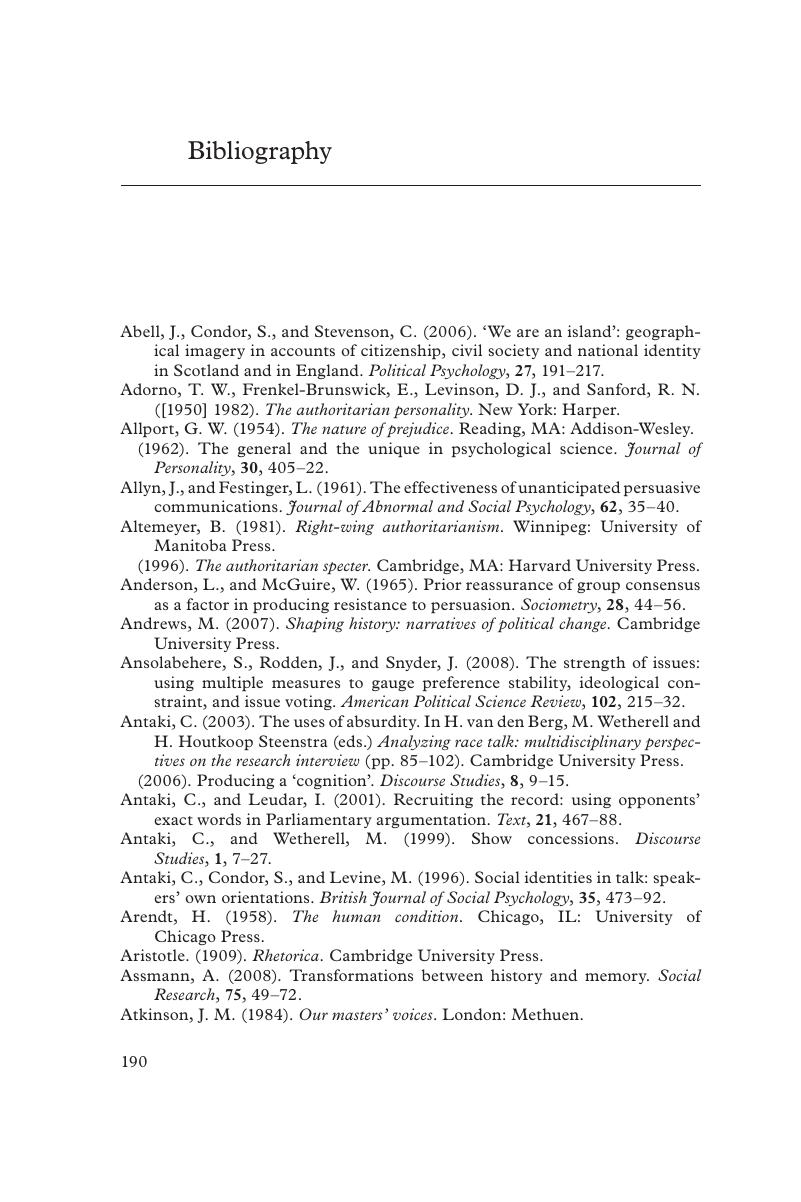Book contents
- Frontmatter
- Dedication
- Contents
- List of Figures
- Acknowledgements
- Transcription notations
- Introduction: political psychology as an interpretive field
- 1 Public opinion and the rhetorical complexity of attitudes
- 2 Mass subjectivity, values and democracy promotion
- 3 The political psychology of intolerance: authoritarianism, extremism and moral exclusion
- 4 Social representations of political affairs and beliefs
- 5 From social to political identity: understanding self, intergroup relations and collective action
- 6 Collective memory and political narratives
- 7 Discourse and politics
- 8 Political rhetoric
- 9 Mediated politics: political discourse and political communication
- Epilogue
- Bibliography
- Index
- References
Bibliography
Published online by Cambridge University Press: 05 June 2014
- Frontmatter
- Dedication
- Contents
- List of Figures
- Acknowledgements
- Transcription notations
- Introduction: political psychology as an interpretive field
- 1 Public opinion and the rhetorical complexity of attitudes
- 2 Mass subjectivity, values and democracy promotion
- 3 The political psychology of intolerance: authoritarianism, extremism and moral exclusion
- 4 Social representations of political affairs and beliefs
- 5 From social to political identity: understanding self, intergroup relations and collective action
- 6 Collective memory and political narratives
- 7 Discourse and politics
- 8 Political rhetoric
- 9 Mediated politics: political discourse and political communication
- Epilogue
- Bibliography
- Index
- References
Summary

- Type
- Chapter
- Information
- Political PsychologyCritical Perspectives, pp. 190 - 227Publisher: Cambridge University PressPrint publication year: 2013



